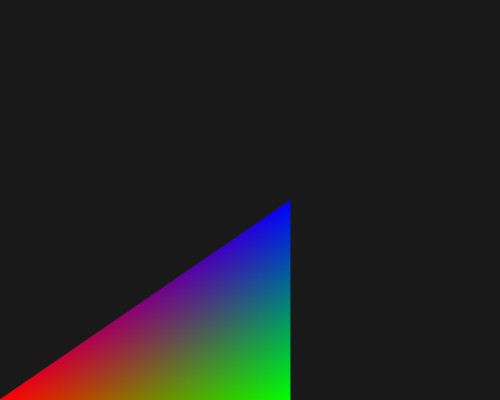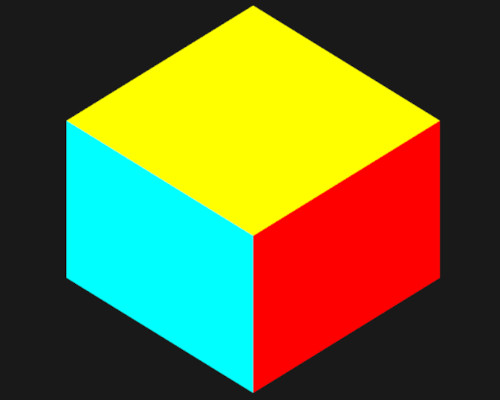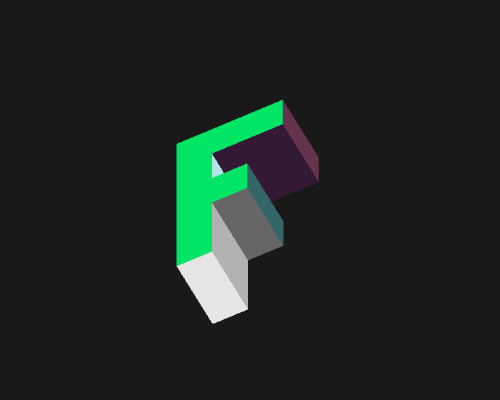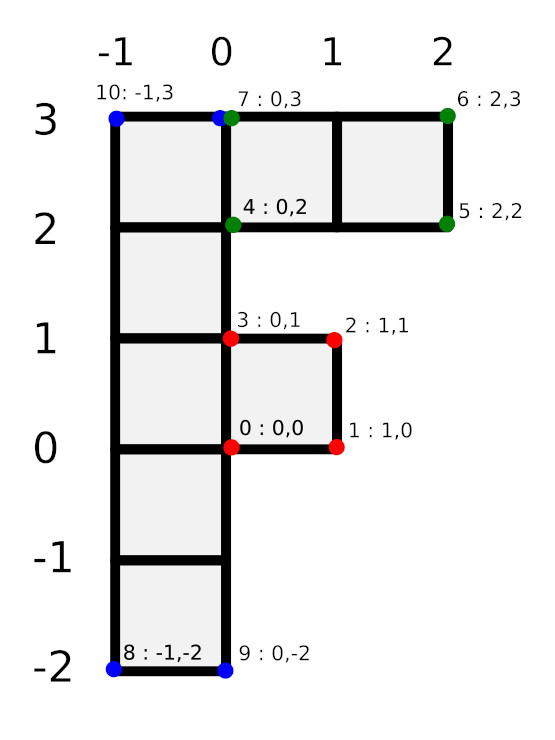WebGL 3D graphics programming in the web browser
WebGL - easy starter script
Description
The WebGL platform is for proramming the GPU. The GPU is designed to run a programs on each element of an array. WebGL runs two programs; a vertex and fragment shader. These two shaders need to compiled and copied loaded onto the gpu. And data too. We will be loading geometry points(x,y,z) and colour data(rgb) for our shaders. This library wraps around the code for loading the gpu so multiple commands can be called with a single wrapper command.
3D graphics is accomplished using matrix math. WebGL leaves the matrix math work to the programmer. This library includes matrices for translation, scaling and rotation.
In the usage examples below you will find scripts for generating data for a cube.
Audience
There are many more features to the art and science of 3D graphics design than just vertices and colouring such as cameras, textures, and lighting. This library includes loading vertex and colour data. And matrices for 3D translation, scale and rotation. You can do a lot with this much. With this library you can go straight into 3D geometry and colouring without having to setup the configuration. With basic JavaScript and Geometry skills and this library anyone can create interactive 3D apps.
Usage
There are three files to work with. Open index.html in your browser to see the result of your work. The file name a00.js is the library itself. The matrices are written in the vertex shader. The vertex and fragment shader are coded in the index.html file. You will enter your data in the file named c00.js.
An accompanying video series on the usage of this WebGL library is available on youtube.com in a playlist. This library is eventually developed and introduced by video # 24.
vid - 24 - library 03: youtu.be/hFdj_SmUkaM
channel: youtube.com/@nadeemelahi593
playlist: playlist?list=PLJUHxPFa4XqP0KREQlaBVST_VLUEFiitS
Demo - scripted-data-entry
3D graphics is accomplished using geometries made up of triangles. So lets draw a triangle. We enter code for an array of verts and corresponding rgb colours in the file named c00.js.
video #24 : youtube.com/watch?v=hFdj_SmUkaM
app link : demo-drawing-a-triangle
verts = [ -1,-1,0 , 0,-1,0 , 0,0,0];
colours = [ 1,0,0 , 0,1,0 , 0,0,1];
DEMO - scripted-cube
Scripting 4 vertices defining a quad to 6 defining 2 triangles is hardly of any consequence. It would be easier to just enter the extra 2 vertices by hand. But now we'll do the same for scripting 8 vertices defining a cube to 48 demonstrating the script's worth.
video #26 : youtu.be/3P7Jxt0fAGQ?si=AhzoSyz-R_SHHocB
app link : demo-scripted-cube
DEMO - letter-f
app link : demo-letter-f
Final Notes
In designing 3D graphics you will usually draw in perspective mode -a vanishing point. The other way to draw is called orthographic mode. Orthographic mode is used by CAD programs such as AutoCAD where precision is essential. Perspective is used for creating the illusion of reality/realism. In real life, things farther away appear smaller. Perspective programming is built on top of orthographic programming. This library does not include persepctive programming. This library produces orthographic graphics.
There is a scrapped file named b00.js. It contains matrix math work too but that done in JavaScript on the CPU. It is tested and working if you wish to play with it.
The app links for the three demo usage examples above are all styled to be full screen and so you can not right click -> view-source. Instead you can prepend the url with "view-source:" in the url bar.
There are two versions of WebGL; version-1 & 2. This library is using WebGL version-1.




